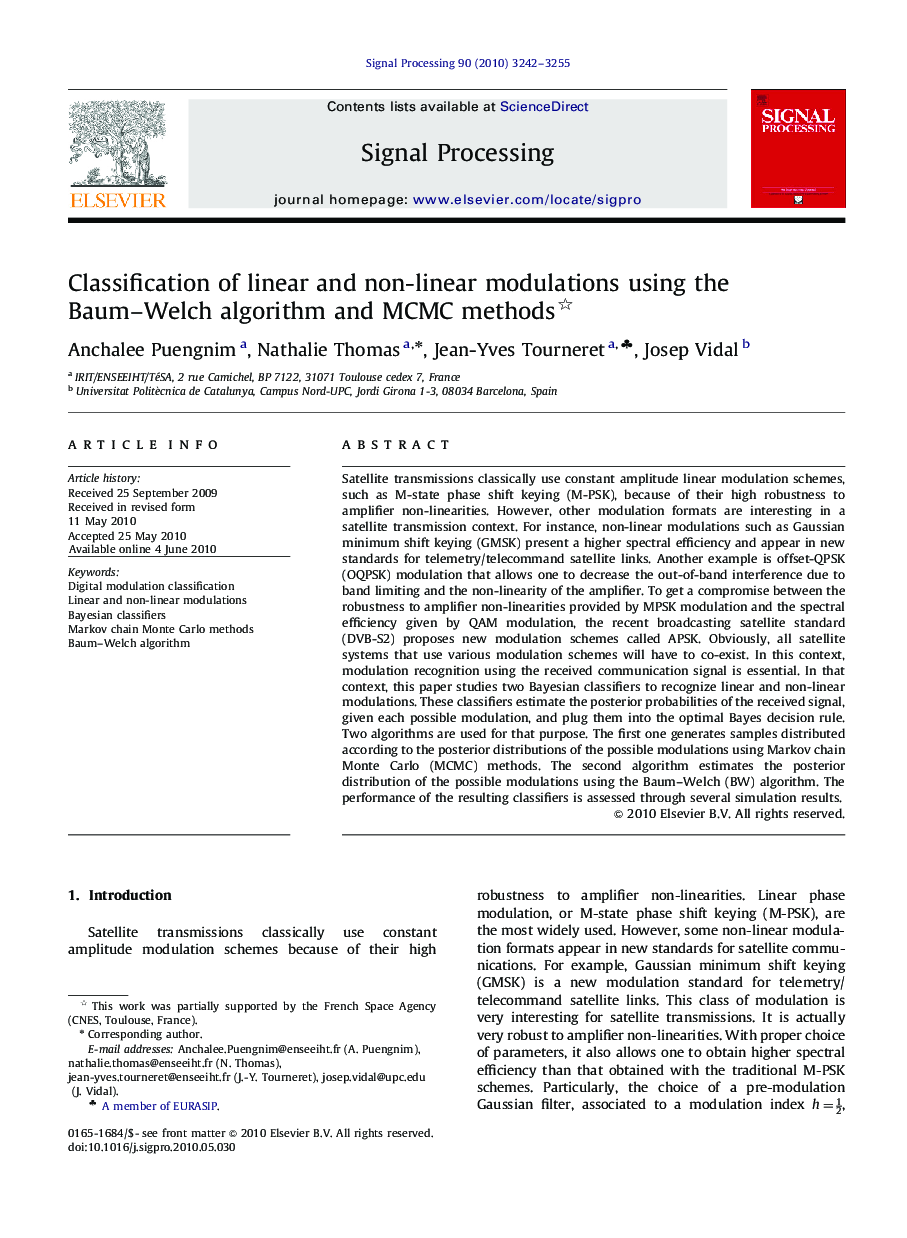| Article ID | Journal | Published Year | Pages | File Type |
|---|---|---|---|---|
| 561652 | Signal Processing | 2010 | 14 Pages |
Satellite transmissions classically use constant amplitude linear modulation schemes, such as M-state phase shift keying (M-PSK), because of their high robustness to amplifier non-linearities. However, other modulation formats are interesting in a satellite transmission context. For instance, non-linear modulations such as Gaussian minimum shift keying (GMSK) present a higher spectral efficiency and appear in new standards for telemetry/telecommand satellite links. Another example is offset-QPSK (OQPSK) modulation that allows one to decrease the out-of-band interference due to band limiting and the non-linearity of the amplifier. To get a compromise between the robustness to amplifier non-linearities provided by MPSK modulation and the spectral efficiency given by QAM modulation, the recent broadcasting satellite standard (DVB-S2) proposes new modulation schemes called APSK. Obviously, all satellite systems that use various modulation schemes will have to co-exist. In this context, modulation recognition using the received communication signal is essential. In that context, this paper studies two Bayesian classifiers to recognize linear and non-linear modulations. These classifiers estimate the posterior probabilities of the received signal, given each possible modulation, and plug them into the optimal Bayes decision rule. Two algorithms are used for that purpose. The first one generates samples distributed according to the posterior distributions of the possible modulations using Markov chain Monte Carlo (MCMC) methods. The second algorithm estimates the posterior distribution of the possible modulations using the Baum–Welch (BW) algorithm. The performance of the resulting classifiers is assessed through several simulation results.
